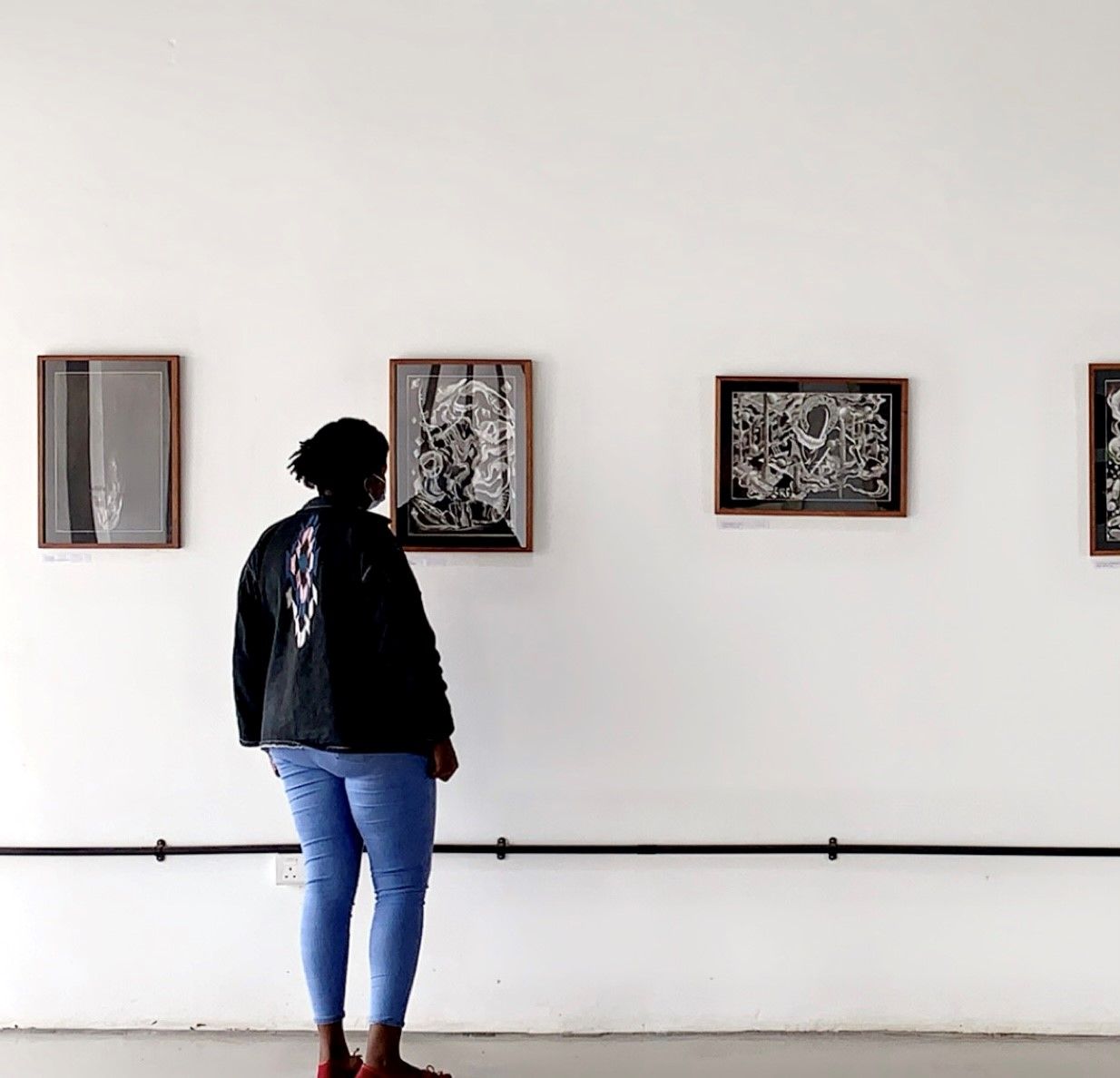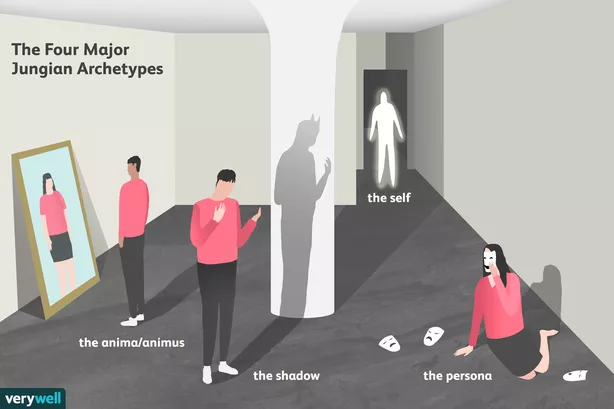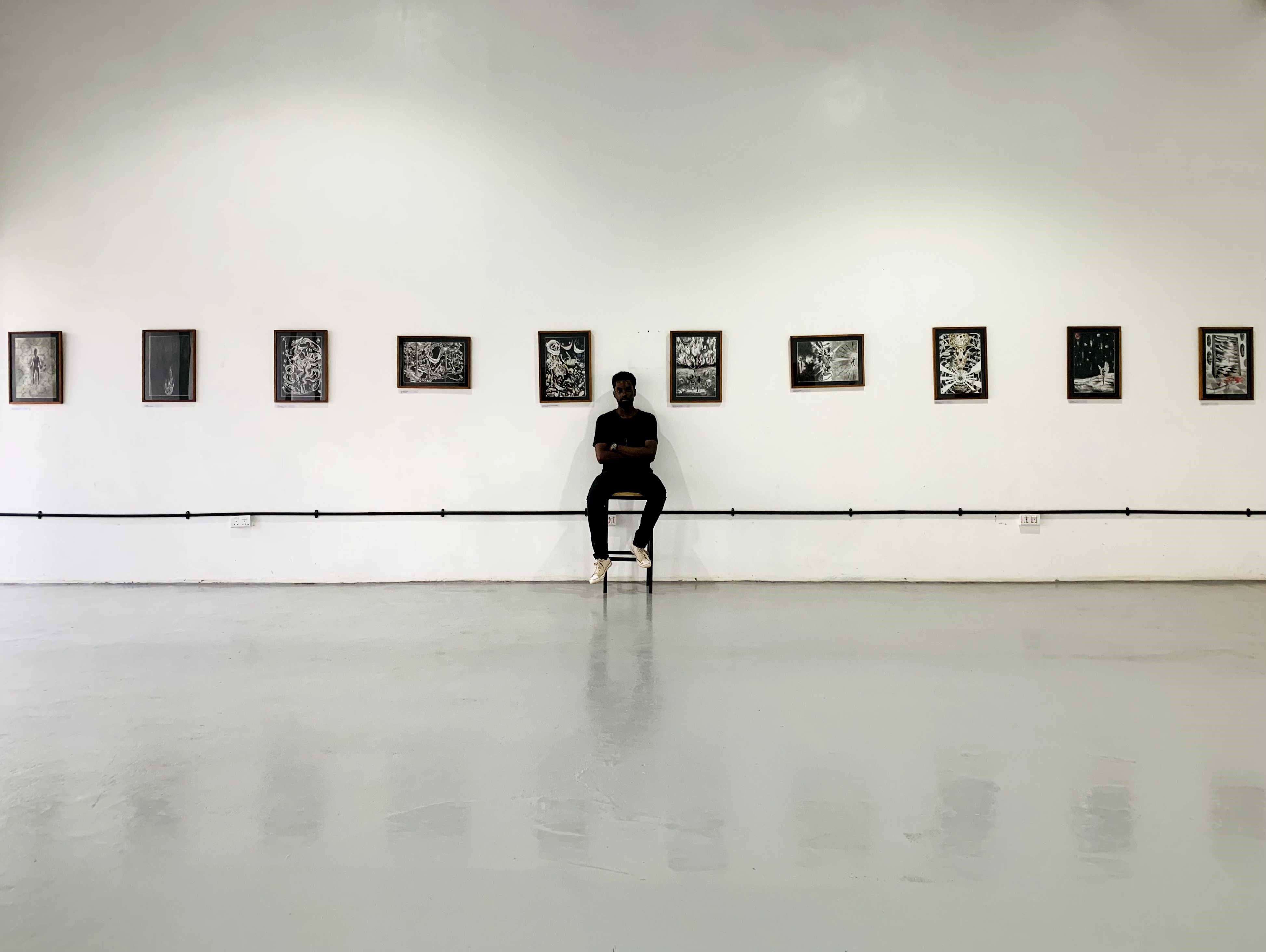
Rebecca Khamala admiring art collection at MoTIV. Source: Ivor Samuel
The Trigger
In the wake of the COVID-19 pandemic, I had just finished university. One moment I was buzzing with excitement, filled with the satisfaction of finishing my bachelor’s degree in architecture, and the next moment I was stuck in a lockdown.
In all my anticipation of wearing the graduation gown, I never in my wildest dreams thought it would be online. Like many, I found myself physically cornered, and psychologically disconnected from the things I long planned for, loved and the life I hoped to build. It took a lot of energy, especially mental energy, to adjust to the new normal.
I found myself overwhelmed by anxiety and feelings of uncertainty because I did not have a source of income; I neither had a job nor the hopes of getting one, and the social isolation only magnified those insecurities. My state got so bad that I found it hard to sleep. At first, it was because my mind was flooded with thoughts that uncontrollably rang through the loud silence of the night, and then it was because I kept being shocked out of sleep by night terrors. I had had a fair share of night terror experiences all the way from childhood, so that would not be a problem because they would always be brushed off as bad dreams. The problem came when I started to constantly, night after night, have night terrors.
Monsters let loose
I vaguely remember seeing this "thing" when I was around 8 years of age. It was formless, it was faceless, it didn't have mass, it just floated in the air. Even without eyes, I could feel it looking at me. I couldn't tell if I was asleep or awake but I definitely saw it move by my bed. It even touched my face, I felt it!
Before I could make sense of what that thing was, I was yanked out of sleep by a very loud scream. I woke up drenched in sweat, my heart racing like I was on an Olympic track, the room lights blinding my eyes, and my ears filled with voices asking me what happened, what I saw, all of which I did not have a response to.
The experience was quite disorienting because I too had been woken from my sleep as they had, so why were my mum and my siblings surrounding me, asking what was wrong? I couldn't narrate what I saw, I only remembered being terrified and woken up by a loud scream. That is one of my earliest recollections of night terrors.
When I repeatedly had night terrors during social isolation, I got scared that I was running mad or that some marine spirit was after my soul. It wasn't until one night when I woke up, shocked from sleep by my own scream, my heart racing, drenched in sweat, disoriented, this time with no one around me because it was now normal, that I decided to Google my experience for the first time. That is how I found out they were called night terrors.
Night terrors- also referred to as sleep terrors, are sleep disorders characterized by episodes of screaming, intense fear, and flailing while still asleep. While they are more common in children, at an estimated 30%, 2% of adults experience them. The cause of night terrors is unknown, although they are often triggered by mood related mental health conditions that interfere with sleep, such as anxiety and depression. A sleep terror episode usually lasts from seconds to a few minutes or longer, and a person tends to:
· Let out a frightening scream
· Suddenly awaken from sleep
· Appear frightened while sitting up in bed
· Sweat, breathe heavily, and have a rapid heart rate
· Be difficult to wake up
· Be confused when woken up
· Have little to no memory of bad dreams or nightmares
· Be inconsolable
Night terrors are not usually a cause of concern regardless of how frightening they are, most children outgrow them by their teens according to the Mayo Clinic. They, however, may require treatment if they cause inadequate sleep problems and pose a safety risk. Adults who experience night terrors are encouraged to consult a psychiatrist to help them deal with underlying issues causing the terrors.
The Psychology of Monsters
Carl Gustav Jung, a Swiss psychiatrist, and psychoanalyst who founded analytical psychology, is known for his theory that talks about how personality types shape our behavior. In Jungian psychology, there are three types of consciousness:
· The conscious mind
All the events and memories we are aware of.
· The personal unconscious
The events and experiences from our own past that we are not fully conscious of.
· The collective unconscious
The universal themes and cultural knowledge that we may not have experienced firsthand, but which still affect us. Jung believed the collective unconscious to be the part of the mind that holds patterns shared with other members of the human species and referred to these as archetypes.
Among the four archetypes — the Persona, the Shadow, the Anima or Animus, and the Self — the Shadow is the part of the unconscious mind that comprises repressed ideas, weaknesses, desires, instincts, and shortcomings. It is said to be the source of both our creative and destructive energies. Jung suggested that the Shadow may take a variety of forms, revealing itself in dreams and visions.

Major Jungian Archetypes. Source: Verywellmind.com
The law of conservation of energy states that energy can neither be created nor destroyed, but can be converted from one form of energy to another. This is true to the energy within our bodies. When the shadow/negative energy is suppressed it finds other means of expression, often harmful ones. Failure of that movement/conversion of energy results in being unwell, just like the energy from emotional tension found expression in my subconscious through night terrors.
Meeting the Monsters in my Head
"It's not the darkness we are afraid of, but the things in it." Ivor Samuel
It was after reading other people's experiences online that I found solace, and ways of identifying and mitigating the potential triggers of my night terrors. Knowledge is, indeed, power! While medications like anti-depressants are often prescribed, night terrors in adults are often treated with talk therapy.
It is also advised to practice good sleep hygiene because night terrors, like the majority of parasomnias, happen in the stage before deep sleep. Having proper sleeping conditions can lead to quicker and better quality deep sleep as well as a balanced life.
Balanced living means considering all aspects of one's life, the mental and emotional health too. With financial fallout from the pandemic and barely any access to mental health diagnosis and therapy, I found healing in art. More than ever, I valued journals.
Being a creative, I always have my writing and art journals and what the COVID-19 lockdown experience taught me is how valuable they are to my mental and emotional wellbeing. They became a channel through which I could convert the negative energy in my system.
I even started a YouTube series narrating my personal experiences alongside material I found interesting in books, films, and shows. I also reconnected with my own art during the lockdowns. The writing and the painting helped me ease the tension in my mind; I could articulate my thoughts through writing, and express my emotions through painting.
After the easing of the COVID-19 restrictions, I was able to attend a film workshop at MoTIV in November. It was during that period that my friend Ivor Samuel was exhibiting his collection "VOODOO" as part of the Art Salon at MoTIV's Art District that happened from 6th November to 6th December 2021. Looking at his work strongly reminded me of my night terrors to the extent that I got chills and nerves as I moved from one painting to another. In those neatly framed works of art lay the monsters that kept creeping up in my sleep.

Ivor Samuel showcases some of his artwork. Source: Ivor Samuel
VOODOO explores the theme of tragedy in the sense that sometimes bad things happen when we dive into our deepest, darkest selves. The artist sought to portray a different side to the African narrative by embracing horror by contrasting the usual heavily patterned, vibrant, tranquil aesthetics in African artwork with subtle patterns, little to no color, loud, violent, and screaming art pieces.

Ivor Samuel. Source: Ivor Samuel
That journey through the VOODOO collection was particularly healing because it was confrontational. It empowered me to speak about the ugly, horrific parts of me that I ordinarily wouldn't bring up in conversations with friends or family.
Conclusion
A study by Claire Christine Kniveton of the University of Northern Colorado shows that art creates space for a deeper understanding of self, much like Ivor's work allowed me to address my Shadow. Art is intricate in processing emotions and relieving stress, inspiring us and reminding us that we are not alone.
In the post COVID-19 society where people are preoccupied with finding ground again, art spaces provide that interruption that helps slow down everything, calm the mind, and initiate conversations on topics like mental health for example, that are often sidelined.
More and more people now appreciate that arts and culture can play a valuable role in helping people who have mental health problems. Through getting involved in arts programmes, people can rebuild their social connections and extend existing support in their communities. Getting in touch with others helps in alleviating loneliness and isolation. This is also true for care homes, where arts activities can help increase social interactions between residents and staff, which can improve mood and wellbeing.
